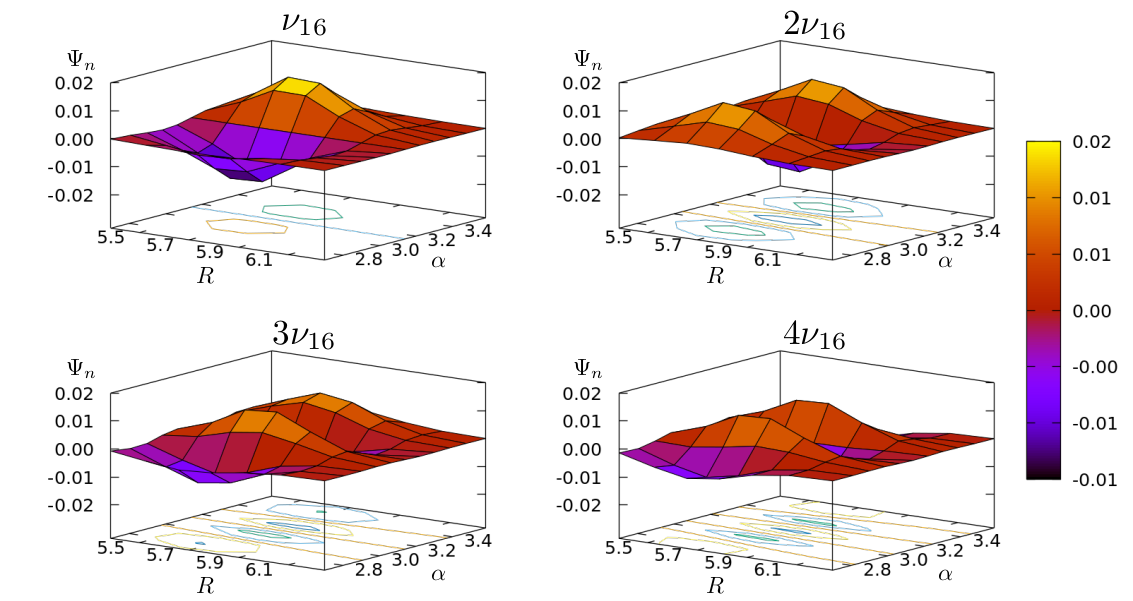Rovibrational computations for molecular dimers
Fingerprint vibrations of the formic acid dimer, including all fundamental and several combination and overtone bands, have been reported with an experimental uncertainty of 1 cm-1 [1], while computational results deviate from experiment by 10‒50 cm-1. To clarify the origin of the large differences of theory and experiment, we have carried out [2] variational vibrational computations using curvilinear and normal coordinate vibrational models from 2 up to 10 fully coupled vibrational degrees of freedom using the GENIUSH computer program [3] and the full-dimensional potential energy surface (PES) developed by Qu and Bowman [4]. A good agreement is achieved with experiment for several fingerprint vibrational bands, but we have found indications for a necessary improvement of the PES before further vibrational computations (of higher dimensionality and/or including the tunneling mode) can be carried out.

Regarding the description of coupled large-amplitude motions, we elaborate on the convergence of rovibrational energies for systems where the amplitude of the wave function is significant in the singular region [5]. For this purpose, we benchmark the numerical convergence and computational efficiency of the black-box-type rovibrational procedure of GENIUSH with respect to a tailor-made dimer Hamiltonian approach [6] for the example of the intermolecular dynamics of the methane-water dimer.
[1] A. Nejad and M. A. Suhm, J. Indian Inst. Sci., 2020, 100, 1.
[2] A. Martin Santa Daria, G. Avila, and E. Mátyus, Phys. Chem. Chem. Phys., 2021, 23, 6526.
[3] E. Mátyus, G. Czakó, and A. G. Császár, J. Chem. Phys., 2009, 130, 134112; C. Fábri, E. Mátyus, and A. G. Császár, J. Chem. Phys., 2011, 134, 074105.
[4] C. Qu and J. M. Bowman, J. Chem. Phys., 2018, 148, 241713.
[5] A. Martín Santa Daría, G. Avila, and E. Mátyus, J. Chem. Phys., 2021, 154, 224302.
[6] X.-G. Wang and T. Carrington Jr. J. Chem. Phys., 2021, 154, 124112.